John Janaro's Blog, page 61
January 21, 2023
The “Heavenly Birthday” of Saint Agnes
January 20, 2023
“I Drove The Car!” A 21st Century Odyssey
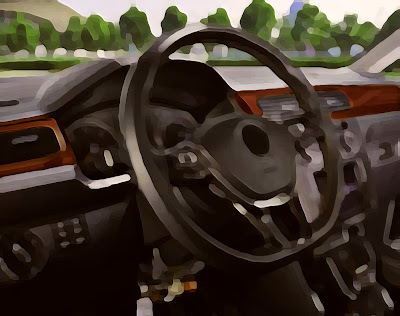 This was a bigger deal than it sounds like. It was quite an achievement for me in the (it sometimes seems) increasingly limited realm of external physical things I’m able to do without help.
This was a bigger deal than it sounds like. It was quite an achievement for me in the (it sometimes seems) increasingly limited realm of external physical things I’m able to do without help.I drove the car on a Saturday afternoon. By myself.
For many decades I drove all sorts of cars on long trips and short trips, logging thousands and thousands of miles all over North America. Even after I began to get sick 20 years ago, I still did plenty of driving. As my stamina flagged, however, Eileen took over more of the longer trips (e.g. driving to my parents’ place an hour or so away). But I ran errands around town, and was able to pick up kids and drop off kids.
I drove regularly until around 2015. It took a toll on me, and I didn’t like it much, but then again I never liked driving much (with the exception of a couple of old manual transmission cars I owned back in the late 1980s, which were actually fun to drive). I did like being able to go places when I wanted to.
A decade ago, it was simple. We had two cars and two drivers in the house. We had the Toyota minivan and then we had “Dad’s car.” The other five members of the household were kids. They needed rides, not cars. But when the kids got bigger, it ironically got more complicated.
Eileen always needed a car to get back and forth from the John XXIII Montessori Center, and at first the kids were going to school there, and then to nearby Chelsea Academy or John XXIII’s adolescent program (White Oaks School). But then the kids started getting driver’s licenses and jobs and became university students. So far they’ve all attended “the local university” (i.e. Christendom College, which is only ten minutes away from our house).
We actually acquired more vehicles. We sometimes had as many as four cars. Second-hand, junky cars. But they worked. They were acquired in various, sometimes peculiar, ways. Teresa bought her own four-wheel-drive ATV, but she was working with horses: buying them, training them, selling them, working at stables, holding summer horse-riding camps, sometimes hauling horse-trailers around. So she had her own vehicle. With John Paul, Agnese, and Lucia, things were sometimes “chaotic” during the period when they were all at Christendom. There was a point when there were more siblings at the university than there were cars, and they had to endure the immense challenge of “sharing” —uh, huh, that was not fun for anyone.
But those “sharing” situations didn’t last very long, as I recall. Eventually Lucia got something even better than a car—namely, a boyfriend… who eventually became a husband. So everybody had “wheels,” except for me! Well, technically “we, the parents” had “our car”—a four door Toyota Camry (actually, several Camrys since 2006, in different colors; the engines in those things never die, but eventually some other part of the car wears out, and it’s more economical to just replace the whole car). But over time (and for obvious reasons) “the parents’ car” was rebranded as “Mom’s car.”
After all, I’m not going anywhere, unless it’s with her. When I go out by myself, I walk. That can be hard some days too, but at least the exercise is good, and I can go at my own pace. Otherwise, I “travel” virtually for nearly all my research needs, and to purchase any odd things I might need. It’s just as well, because most days there are no cars in our driveway.
The actual number of vehicles around here has decreased. John Paul graduated, got a job, got his own car (a much nicer car than anything I ever had), got married, and moved across town. Agnese graduated, got a job, and took her car down the road to the house she shares with some friends. Lucia graduated, got married, sold her car, and moved to New Jersey where Mike’s family lives.
Suddenly, our driveway no longer looks like a used car lot (or a salvage yard). We’re back to two vehicles: Teresa’s (and she’s not here very often) and “Mom’s car,” which is coming and going all the time.
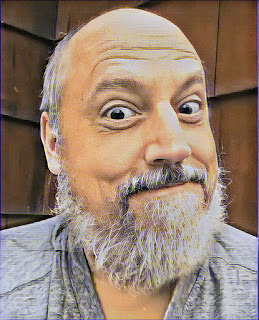 This is my predicament: even if I wanted to go somewhere, I don’t have a car. I am a 60-year-old man in a rural town in the United States of America, and I don’t have a car.
This is my predicament: even if I wanted to go somewhere, I don’t have a car. I am a 60-year-old man in a rural town in the United States of America, and I don’t have a car.It hasn’t bothered me, however, because driving—like everything else—has become an increasingly exhausting activity. My health is still more or less “stable” (on low power) but it also seems to be slowly declining. It requires more energy to do less, especially from the neck down. I haven’t given up yet, though. Recent years, however, have been weird.
I had decreased my driving to the occasional bookstore, library trip, or visit to a nature spot. Any more just took too much energy and then I would be in danger of getting over-stressed, which is not a safe condition in which to drive. (Actually, I have always been a terrible driver — either philosophically abstracted and not paying attention to the road, or else obsessive, irritated, anxious, mistake-prone: I have written about my utter folly behind the wheel elsewhere on the Blog — see HERE and HERE, which tell an interesting tale of God bringing a wonderfully greater good out of my … uggh… facepalm 🤦♂️… almost getting myself killed: it’s a very good story, ultimately, thank God. Check out those links.)
So—to return to the more recent story—I hadn’t driven more than a handful of times in 2017, 2018, 2019… [you know what’s coming up].
2020: the Pandemic arrives. I don’t know if I have quite recovered from the surreal-ness of that whole time. I actually did lots of walking in 2020 and felt quite well, ironically (better that I do now). But nobody was driving anywhere, it seemed, in 2020-2021ish-2022ish(?). There are many ways to consider the Pandemic, not only as an obvious medical crisis (a very real one, that tragically took the lives of some members of our parish community), but also as a socially disorienting event in various ways. In the U.S.A., of course, it was also turned into a political brawl and a media frenzy. And then, suddenly—it seemed—the crisis passed, and everybody went back to acting as if it never happened. Places and events opened up and people started partying twice as hard as ever. Daily Covid statistics seemed to vanish from the News.
It should be said that part of this was due to a “success story.” Immunity and (relative) domestication of the disease through the collaborative efforts of the medical community in vaccine development, plus(?) the virus playing out some natural cycle in the human population seemed to reduce the worst dangers of the disease.(?) [It’s not over yet: China bungled things since Day One and we still don’t know what’s going on over there.]
But something else suddenly intervened to turn everyone’s thoughts in another direction. In media, politics, and—sadly—in reality too, a new danger rose up and stole the spotlight away from the Pandemic. The plague of COVID-19 seemed to give way to another plague—“contained” for now to a particular place, where it wreaks murderous havoc, but in danger of metastasizing into a global toxic nightmare—a plague of the mind, (at least, it begins in the mind); a virus born in the minds of Kremlin imperialists that is “infecting” the bodies of their targets, but also endangering the diverse minds of those who surround it, who might become inflamed with their own opportunism, manipulation, and greed, and move in directions beyond anything we can imagine. The world united in the fight against COVID-19. How will the world be shaken and burned by the poison of PUTIN-22?
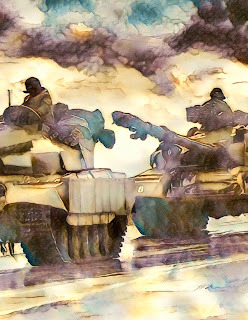 Our hearts break for the suffering of the Ukrainian people, and—of course—they have the right to defend themselves and other nations should help them. But we cannot trust the (il)logic of technological warfare, its potential for rapid escalation, and the possibility of catastrophic retaliation. This war is at an impasse that can only be broken by escalation. Who will control the scope of this escalation? Perhaps there is no choice except to “play with fire,” but let us not forget that it is fire, and let us make sure that the merchants of this fire are held to a high standard of integrity. It is perilous when profiteers are allowed to make the rules of such a dangerous “game.”
Our hearts break for the suffering of the Ukrainian people, and—of course—they have the right to defend themselves and other nations should help them. But we cannot trust the (il)logic of technological warfare, its potential for rapid escalation, and the possibility of catastrophic retaliation. This war is at an impasse that can only be broken by escalation. Who will control the scope of this escalation? Perhaps there is no choice except to “play with fire,” but let us not forget that it is fire, and let us make sure that the merchants of this fire are held to a high standard of integrity. It is perilous when profiteers are allowed to make the rules of such a dangerous “game.”Have we learned anything, as human beings, from these traumatic years? I fear we may need to be reminded again and again, in perhaps different ways — but there’s hope in that, because we are not the masters of reality; we live this profound need for something we cannot give ourselves (even if most of the time we distract ourselves from our own radical dependence and indigence). Events that “remind us” of who we really are can be scary, but ultimately what’s more scary is the possibility that we might forget who we are.
This blog post started out as whimsical reflection about me driving “my” car for the first time in three years. Let me return to that story. Last Saturday, John Paul and Eileen had gone shopping in Winchester (and, good son that he is, he drove). Meanwhile, I had it on my mind to take care of something in town… and there was the car. “Mom’s car.” In the driveway. Not being used. So I found my car keys, and—with some small trepidation—got in and started the car. It felt fine. It felt normal. I drove in the town and returned without incident.
I might just do it again soon. It seems my driving days may not be completely over.
So how did this story get so “heavy”? Well, life is “all one piece,” and I have never been able to ignore that. I am not the master of my own reality. This used to cause me a lot more anxiety, but I’m learning that I grow by responding to the reality that is given to me, whether it’s driving a car or living through the transforming dynamics of home and family life or my own illness or a global pandemic or the suffering, the rage, the injustice, and the ominous unpredictability of war.
“Baby [I] can drive my car!”🎶 Ha, I need a car that I can use more often. Jojo will probably get a car before I do. She’ll need it more than me, before long. I just ask to be able to be wherever I need to be today, every day.
January 17, 2023
Maria Takes a Nap!
Not exactly a “news flash,” but all of this being-a-Papa is still wondrously new to me.
Left: Maria falls asleep on Papa’s shoulder (n.b. Clownie is sleeping too). Right: AWAKE and shaking up that wooden doll.☺️🙂

January 16, 2023
Martin Luther King Jr.—The Realization of Freedom as LOVE
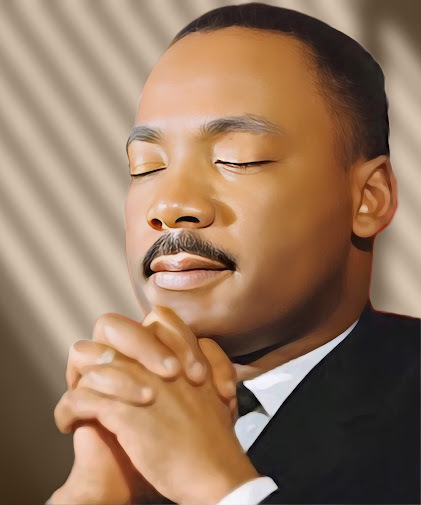 My country, the United States of America, is a good country. Its very existence is inspired by an ideal: the ideal of human freedom and the intrinsic and distinctive value of every human being. This is a great human ideal, the fruit of a vital and broad intuition that promised to change the way people lived together and regarded one another. In the beginning, however, the ideal was often poorly, or only partially, understood. Indeed, this is still very much the case today.
My country, the United States of America, is a good country. Its very existence is inspired by an ideal: the ideal of human freedom and the intrinsic and distinctive value of every human being. This is a great human ideal, the fruit of a vital and broad intuition that promised to change the way people lived together and regarded one another. In the beginning, however, the ideal was often poorly, or only partially, understood. Indeed, this is still very much the case today.Also, the American ideal of freedom has always been entangled with many other circumstances and preoccupations and ambitions. It was often conveniently forgotten when it came down to how certain people were to be treated; the tragedy was that the U.S.A. often proclaimed this ideal most loudly when it was also generating complex protocols for dodging its implications. It is astonishing that the phrase “all men [human beings] are created equal” was articulated in a society where so many men claimed proprietary ownership over other men.
Slavery eventually ended, but racism remains a corrosive force among us. Blacks still experience complex networks of discrimination and particular difficulties in escaping from poverty. The injustices and inequities of racism must be faced. Dr. Martin Luther King Jr. recognized that this nation needed justice, but he was determined not to answer violence with more violence. He sought to break the cycle of violence—the endless generation of oppression and resentment—through his historic nonviolent protest movement in the 1950s-1960s. In the process, Dr. King touched upon ways of being and acting that were relevant to the whole scope of human life. Though his legacy will always be primarily the fight against racism, Dr. King introduced the practice of nonviolent protest in a way that has been taken up by many social movements in the U.S.A. and around the world. This is not surprising. King realized that racism endures—as do so many human social problems—because of its foundation in the failure to recognize that every human being is a person. The whole multifaceted crisis of isolation and disintegration and the perpetuation of violence among individuals and between groups is a crisis of the human person.
Everyone speaks of "human rights" but no one seems to know what it means to be human, or why human beings have a value that demands respect, a value that deserves to be cherished, fostered, cultivated, defended, loved.
We are very far indeed from recognizing first and above all that each and every human person possesses a unique and ineradicable dignity which has its origin in something beyond the powers of this world, beyond any mere social consensus or political expediency.
Every human person possesses the dignity of being created in the image and likeness of God. Dr. King was emphatic about this point, and it is one of the keys to his ongoing relevance to the entire political experiment of the U.S.A. “Human dignity” is not a political or social construct. It is founded on a Source that transcends the whole world, but also impresses a stamp of inviolable identity and ineradicable value on every human person. Dr. King made this clear when he said: "The whole concept of the Imago Dei or the Image of God, is the idea that all men have something within them that God injected. This gives him a uniqueness, it gives him worth, it gives him dignity. We must never forget this. There are no gradations in the Image of God. Every man from a treble white to a bass black is significant on God's keyboard, precisely because every man is made in the image of God. One day we will learn that. We will know one day that God made us to live together as brothers and to respect the dignity and worth of every man."
Dr. King focused on the theme of the U.S.A.’s founding document—the Declaration of Independence—according to precisely that “evident truth” that must not be obfuscated or eclipsed if we want to aspire to a society that respects human dignity and human rights: “All are created equal, and are endowed by their Creator with certain inalienable rights…” Humans are created persons, and their inherent dignity as persons and their rights as persons are given to them by God, who creates them in His image. The American Founders themselves missed the full implications of what they declared here (and thus slavery and racism continued). It would be “four score and seven years” before a U.S. political leader would effectively propose a more profound examination of these founding principles.
A century later, Martin Luther King would challenge his country to go even deeper, to take a further step in an effort to be a nation of persons who are given-to-themselves, radically—who have rights, indeed, to live in the dignity of God’s image, to be free as persons, and to pursue their destiny, their need for fulfillment, for “happiness.” Dr. King realized that the implicit exigency of this declaration projected the actualization of these “human rights” and this freedom as love—love for the God who makes us and directs our history, and love for one another as children of God, as brothers and sisters.
What Dr. King asked from the government was not that it force humans to love one another, but that it would attend to removing the obstacles to freedom that were entrenched in society, the injustices that imposed suffering, encouraged divisions and resentment, and fostered a forgetfulness of our common humanity.
Here I believe that Dr. King—taking up the struggle against racism in the light of the Gospel’s proclamation of grace and redemption—caught a glimpse of how God’s saving love can penetrate and shape even our temporal hopes and aspirations, thereby enabling us to see and to build up the good in this world, to have a society more helpful, more loving, more willing to share burdens on the journey of this life toward its ultimate fulfillment.
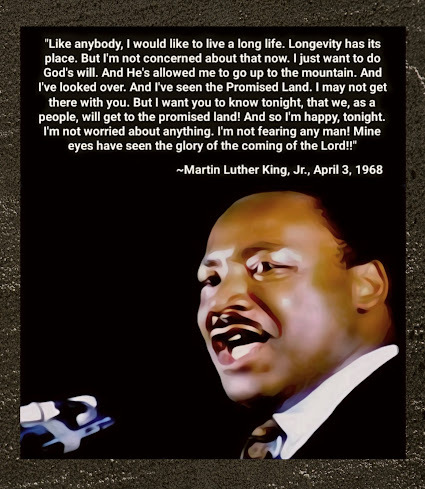 And we must struggle against social evils and injustices, not in the hopes of building a utopia, but because we who are made in God’s image are called to do God’s will—which is his mercy. The effort to make society better involves the works of mercy, and perhaps looks forward to something like a “culture of mercy” or a “civilization of love” (as Saint Paul VI envisioned it). Here I am trying to see from my own place on the mountaintop something that corresponds to King’s “Promised Land” image that he referenced in his final speech the night before his death—and I see a Gospel-inspired ideal of an entire temporal social order full of the plea for mercy, for peace, of aspirations and attainments of unity, mutual esteem, and solidarity. As a Catholic Christian, I am guided by the consistent teaching and vision of all the Popes in my lifetime, beginning with Saint John XXIII’s Pacem in Terris and developing through the Second Vatican Council to Paul VI, John Paul II, Benedict XVI, and Francis in the present day.
And we must struggle against social evils and injustices, not in the hopes of building a utopia, but because we who are made in God’s image are called to do God’s will—which is his mercy. The effort to make society better involves the works of mercy, and perhaps looks forward to something like a “culture of mercy” or a “civilization of love” (as Saint Paul VI envisioned it). Here I am trying to see from my own place on the mountaintop something that corresponds to King’s “Promised Land” image that he referenced in his final speech the night before his death—and I see a Gospel-inspired ideal of an entire temporal social order full of the plea for mercy, for peace, of aspirations and attainments of unity, mutual esteem, and solidarity. As a Catholic Christian, I am guided by the consistent teaching and vision of all the Popes in my lifetime, beginning with Saint John XXIII’s Pacem in Terris and developing through the Second Vatican Council to Paul VI, John Paul II, Benedict XVI, and Francis in the present day.Much of Dr. King’s vision is congruent with the larger aims of Catholic social teaching. King was familiar with the “personalistic” and “communitarian” implications of the Gospel. As he put it, “ ‘I’ cannot reach fulfillment without ‘thou.’ The self cannot be self without other selves. Self-concern without other-concern is like a tributary that has no outward flow to the ocean.”
The dignity of being created in God's image, of being a person, is lived and fulfilled in relationship to other persons. I can only discover "myself" through the gift of myself. We exist in relation to one another, and we realize ourselves in the living affirmation of "being-in-relationship." We fulfill ourselves by caring for one another, by taking responsibility for one another, by living the relationships with the persons who have been given to us.
People today speak so much about freedom, and we think we know that "freedom" means being able to choose for ourselves without being coerced or suffocated by some extrinsic power, whether private or public. But this does not mean that freedom is pure indifference, without purpose. Freedom has a meaning that comes from within itself. It is written upon our hearts.
Freedom does not exist to affirm itself, or to simply lose itself in a connivance with psycho-physical urges, forces, and drives within the person that are meant to serve freedom.
Freedom is made for the giving of self. Through freedom the person exists as a gift, the "I" lives in relation to the "Thou." This common unity blossoms into a solidarity that discovers more relationships to others and awakens more love.
It leads to "community"—communion of persons in love.
We are challenged to "let freedom ring"—to live our freedom by choosing to affirm the dignity of every human person, choosing to give ourselves in love, choosing to live in communion with God and with one another. The Christian knows that such choices are empowered by the grace of Christ. They enact an affection for humanity that is born in us when we encounter Jesus and experience his love for our humanity. We can live in a “secular society” because we know that the ways of God are mysterious, and that Christ who is the Lord of all can encounter and draw our non-Christian friends “secretly” in the ways of his love—until the day that they finally meet him in his fullness. Not knowing the interior dispositions of others, we have no reason to feel superior to then. We can always take the lowest place, and choose to follow Christ by serving all the others.
Or we can choose to horde ourselves; we can choose to live according to our whims, our impulses, our perceptions, our prejudices, our fear. And we will reap a harvest of violence, and more violence.
Martin Luther King, Jr. remains important to our history today, reminding us of what it means to be persons, to give ourselves, to live as children of God, as brothers and sisters.
He legacy remains with us, to remind us to be free, to remind us of the drama and responsibility of freedom, and of the promise that awakens freedom and draws it (and us) toward the happiness of communion in the One in whose image we have been created.
January 14, 2023
Pope Francis Describes the “Piecemeal” Third World War
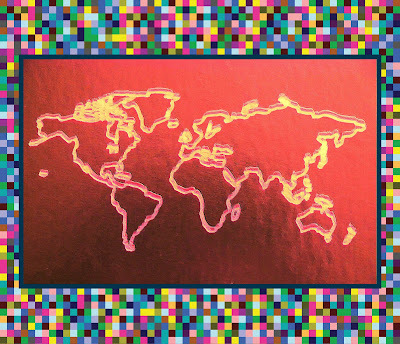 Earlier this week, Pope Francis addressed a gathering of international diplomats accredited to the Vatican. The devastation of Ukraine continues unabated, and the Kremlin has announced the imminent conscription of an additional half a million men to sustain an invasion which has been both brutal and inept. We cannot allow ourselves to lose sight of the immense ongoing suffering of this war, nor the perils of its escalation for the whole world. On the other hand, while we may think we should worry about the possibility of “World War III,” Francis has been saying for years that we are already in the midst of it. In light of Ukraine, Francis’s enumeration of the ongoing, often intractable and bloody conflicts currently raging around the world—along with new or increasing tensions in other places—might seem more compelling to those of us who live in comfort and at a distance from the multiple fronts.
Earlier this week, Pope Francis addressed a gathering of international diplomats accredited to the Vatican. The devastation of Ukraine continues unabated, and the Kremlin has announced the imminent conscription of an additional half a million men to sustain an invasion which has been both brutal and inept. We cannot allow ourselves to lose sight of the immense ongoing suffering of this war, nor the perils of its escalation for the whole world. On the other hand, while we may think we should worry about the possibility of “World War III,” Francis has been saying for years that we are already in the midst of it. In light of Ukraine, Francis’s enumeration of the ongoing, often intractable and bloody conflicts currently raging around the world—along with new or increasing tensions in other places—might seem more compelling to those of us who live in comfort and at a distance from the multiple fronts. Measuring the scope of global violence today should cause us all to pray and work for peace, begging that Jesus the Prince of Peace will save us from our own sins, from the violence and/or negligence of our own hearts, and draw us to follow Him in the ways of peace in the environments in which we live, in our families and our communities. In as much as we are able in our own given circumstances, we can be “peacemakers.” We can carry out the works of mercy, remembering those who suffer throughout the world, uniting ourselves to Christ’s redeeming love for the conversion of hearts from the many sins that lead to war, and to bring healing to our broken world.
In the first segment of his address (quoted below in italics), the Pope indicates various ongoing conflicts and areas of ongoing danger throughout the world: in Europe since the invasion of Ukraine last February, and also in the Middle East, South Sudan, the Democratic Republic of the Congo, West Africa, Ethiopia, Yemen, and East Asia—especially Myanmar and the increasing tensions on the Korean Peninsula.
As the 60th anniversary of Saint John XXIII’s encyclical Pacem in Terris draws near, we should entrust our war-torn world to the Heart of Jesus whose love is greater than our sins and the sins of the world.
Here is the excerpt from Pope Francis’s address:
“Today the third world war is taking place in a globalized world where conflicts involve only certain areas of the planet directly, but in fact involve them all. The closest and most recent example is certainly the war in Ukraine, with its wake of death and destruction, with its attacks on civil infrastructures that cause lives to be lost not only from gunfire and acts of violence, but also from hunger and freezing cold. For its part, the conciliar Constitution Gaudium et Spes states that ‘every act of war directed to the indiscriminate destruction of whole cities or vast areas with their inhabitants is a crime against God and humanity which merits firm and unequivocal condemnation’ (No. 80). Nor can we forget that war particularly affects those who are most fragile—children, the elderly, the disabled—and leaves an indelible mark on families. Today, I feel bound to renew my appeal for an immediate end to this senseless conflict, whose effects are felt in entire regions, also outside of Europe, due to its repercussions in the areas of energy and food production, above all in Africa and in the Middle East.
“The present third world war fought piecemeal also makes us consider other theatres of tension and conflict. Once more this year, with immense sorrow, we must look to the war-torn land of Syria. The rebirth of that country must come about through needed reforms, including constitutional reforms, in an effort to give hope to the Syrian people, affected by growing poverty, while at the same time ensuring that the international sanctions imposed do not affect the daily life of a people that has already suffered so much.
“The Holy See also follows with concern the increase of violence between Palestinians and Israelis, sadly resulting in a number of victims and complete mutual distrust. Jerusalem, a holy city for Jews, Christians and Muslims, is particularly affected by this. The name Jerusalem evokes its vocation to be a city of peace, but sadly, it has become a theatre of conflict. I trust that it can rediscover this vocation to be a location and a symbol of encounter and peaceful coexistence, and that access and liberty of worship in the holy places will continue to be guaranteed and respected in accordance with the status quo. At the same time, I express my hope that the authorities of the State of Israel and those of the State of Palestine can recover the courage and determination to dialogue directly for the sake of implementing the two-state solution in all its aspects, in conformity with international law and all the pertinent resolutions of the United Nations.
“As you know, at the end of the month, I will at last be able to go as a pilgrim of peace to the Democratic Republic of the Congo, in the hope that violence will cease in the east of the country, and that the path of dialogue and the will to work for security and the common good will prevail. My pilgrimage will continue in South Sudan, where I will be accompanied by the Archbishop of Canterbury and by the General Moderator of the Presbyterian Church of Scotland. Together we desire to unite ourselves to the plea for peace by the country’s people and thus contribute to the process of national reconciliation.
“Nor must we forget other situations still burdened by the effects of still unresolved conflicts. I think in particular of the situation in the South Caucasus. I urge the parties to respect the cease-fire, and I reiterate that the liberation of military and civil prisoners would prove to be an important step towards a much-desired peace agreement.
“I think too of Yemen, where the last October’s truce holds, yet many civilians continue to die because of mines, and of Ethiopia, where I trust that the peace process will continue and the international community will reaffirm its commitment to respond to the humanitarian crisis experienced by that country.
“I also follow with deep concern the situation in West Africa, increasingly plagued by acts of terrorist violence. I think in particular of the tragic situations endured by the populations of Burkina Faso, Mali and Nigeria, and I express my hope that the processes of transition under way in Sudan, Mali, Chad, Guinea and Burkina Faso will take place in respect for the legitimate aspirations of the populations involved.
“I am particularly attentive to the situation of Myanmar, which for two years now has experienced violence, suffering and death. I invite the international community to work to concretize the processes of reconciliation and I urge all the parties involved to undertake anew the path of dialogue, in order to restore hope to the people of that beloved land.
“Finally, I think of the Korean Peninsula, and I express my hope that the good will and commitment to concord will not diminish, for the sake of achieving greatly-desired peace and prosperity for the entire Korean people.
“All conflicts nonetheless bring to the fore the lethal consequences of a continual recourse to the production of new and ever more sophisticated weaponry, which is sometimes justified by the argument that ‘peace cannot be assured except on the basis of an equal balance of armaments’. There is a need to change this way of thinking and move towards an integral disarmament, since no peace is possible where instruments of death are proliferating.”
January 12, 2023
January Bare Bright Skies


JJStudios has been experimenting with portraiture, as the previous post indicated and displayed. But work also continues on natural settings in their seasonal variations. Winter has colors and impressions of its own.
January 10, 2023
The Enduring Fascination of Christina Grimmie’s Face
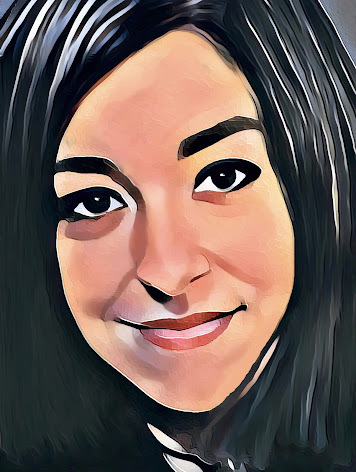 Six years and seven months later, this face still surprises and inspires me.
Six years and seven months later, this face still surprises and inspires me.The face, of course, is that of Christina Grimmie—which I hope is still recognizable through the artistic “interpretation” that my imagination has used to attempt to express one of the ways I perceive it. Here I’m aided by digital filters, “paint” apps, and the specific manual “virtual sculpting” that together constitute a method of virtual artistic expression I am continuing to develop (and, I hope, improve). I work on Christina “portraits” with a persistence, intensity, and patience that surprise me. Rarely am I satisfied with the results, but I continue to seek to do this work—to craft a perspective, a vista, a momentary flash of the inexhaustible personality that animated her face.
Christina’s is still “everywhere” represented online. The late singer/songwriter/teenager-young-adult YouTube pioneer was slain on June 10, 2016 at an open meet-and-greet after a concert in Orlando, Florida. One of the great plagues of our society—gun violence—took her life from this world at the age of 22. Violence took her away from her family, her loved ones, her “frands,” the music she made with her astonishing voice, and the radiant image of positivity and hope that she sustained even amidst difficult circumstances that was a vital inspiration to so many of her young followers. Nevertheless, her legacy has grown over the past 6+ years, and her giving of herself continues to bear fruit.
 Today, images of Christina’s remarkably expressive face have multiplied exponentially all over the internet (helped, no doubt, by growing AI technology). Her YouTube channel remains current with just under four million subscribers, and her incredible voice is still being heard by many people, some of whom are just discovering her immense musical talents for the first time. The international Team Grimmie continues to grow. And Christina’s family and friends continue her generous and grateful affirmation of life—her determination to respond to evil with good, to hatred with love—through The Christina Grimmie Foundation which provides financial assistance and human solidarity directly to families of victims of gun violence.
Today, images of Christina’s remarkably expressive face have multiplied exponentially all over the internet (helped, no doubt, by growing AI technology). Her YouTube channel remains current with just under four million subscribers, and her incredible voice is still being heard by many people, some of whom are just discovering her immense musical talents for the first time. The international Team Grimmie continues to grow. And Christina’s family and friends continue her generous and grateful affirmation of life—her determination to respond to evil with good, to hatred with love—through The Christina Grimmie Foundation which provides financial assistance and human solidarity directly to families of victims of gun violence.There is something extraordinary about this girl.
I’m still “searching” for her face—from pictures shared by others (always “credit to owners” for the original photographic images presented here; this blog is strictly for gratuitous and educational purposes and is never-for-profit), or from many screenshots of videos that serve as “foundational sketches” for my artistic efforts, or from whatever-other-places she pops up—I have a huge file of materials for my “Grimmie Portraits” which serve as templates for my private and personal art works (many of them “in progress”), a few of which are gratuitously shared here or on social media.
There is reflected in Christina’s face a deep joy, a gigantic passion for life, a powerful yearning to give and to receive love, a sense of responsibility for the gifts (and the people) given to her, and an overflowing gratitude: always this gratitude from the depths of her heart. I look at her face and I’m convinced that her life was full of what she saw deep down in things, the encounter with the Mystery that sustains and resonated through all of reality, and that awakened and energized her in the days of her brief beautiful life.
I want to see what she saw. I want to see more, and to live with greater ardor an adherence to that Mystery.
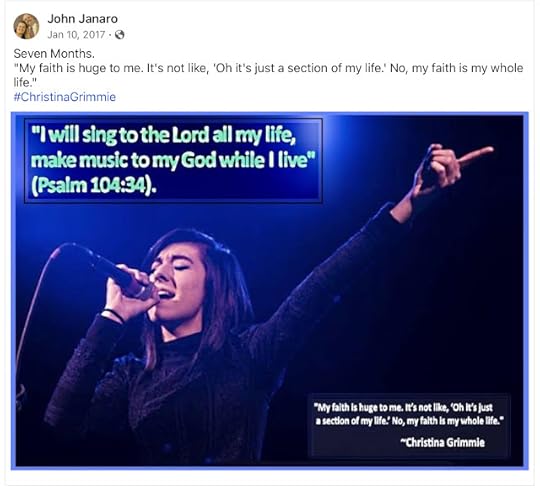 Six years ago I posted the above image and texts. I used to search out those occasional moments when Christina made explicit reference to her faith. Her words about her love for Jesus Christ were unambiguous and all-encompassing when she spoke about the foundation of her own life. Perhaps by isolating these quotations, however, I was too preoccupied with presenting her in the form of a “pious image.” Certainly, when she said “my faith is my whole life,” she meant it. But the remarkable and truly “mysterious” quality of Christina was that she lived her faith, ardently, right inside of a real and relatable teenage/young-adult life with its panoply of interests and “distractions,” the give-and-take of adolescent fun on her YouTube channel and in her social media, and her pursuit of a successful career in popular music where she could share all of her prodigious musical talents and her stupendous, jaw-dropping singing voice.
Six years ago I posted the above image and texts. I used to search out those occasional moments when Christina made explicit reference to her faith. Her words about her love for Jesus Christ were unambiguous and all-encompassing when she spoke about the foundation of her own life. Perhaps by isolating these quotations, however, I was too preoccupied with presenting her in the form of a “pious image.” Certainly, when she said “my faith is my whole life,” she meant it. But the remarkable and truly “mysterious” quality of Christina was that she lived her faith, ardently, right inside of a real and relatable teenage/young-adult life with its panoply of interests and “distractions,” the give-and-take of adolescent fun on her YouTube channel and in her social media, and her pursuit of a successful career in popular music where she could share all of her prodigious musical talents and her stupendous, jaw-dropping singing voice.In all of this, she remained down to earth. Recently, I found the source of this beautiful quotation in a YouTube live stream. Christina was chatting with her frands about television shows and songs and video games—the kind of talk that my own kids (ranged 16-25 years old) pass around among themselves and with their friends, and that I cannot enter into because I am by nature an uncool Dad. 🥸😜 Then in the midst of this stream of jocular verbiage, Christina found a moment to make reference to her faith and to clarify it with a seriousness that was earnest yet effortless—that didn’t withdraw from the adolescent mood of the conversation, that was natural and memorable, and that was followed by more talk of food, music, and video games.
My instinctive “uncool old man” reaction would ordinarily be to find nothing particularly remarkable in this kind of conversation, even with a religious reference in the middle of it. But as I watched Christina I began to glimpse something deeper in the way in which she was engaging and accompanying her frands, who were mostly teens and pre-teens. She was sharing her own interests, her own goofy self, but within that normal 21-year-old young woman was the immeasurably greater reality—the Mystery, the Mystery-made-flesh—transforming her, shining through her humanity, Jesus Christ her whole life.
Faith is a great adventure, a growth in conviction, an enlargement of the fascination of life, of hope and love and vulnerability, of the search for the fullness of the meaning of things. Christina Grimmie remains for me a bright light on my own journey of faith seeking understanding, longing to “see,” loving and hoping for the fulfillment of love.
The persistence of my poor artistic efforts over the past six years are grounded here.

January 9, 2023
God Reveals Himself in the Waters of the Jordan
From Bethlehem to the Jordan to Cana — the Word made flesh embraces our lives and changes us. He reveals to everyone the face of a loving and merciful God who wants to stay with us, who wants us to know that we are never alone, that we are loved with an everlasting love.
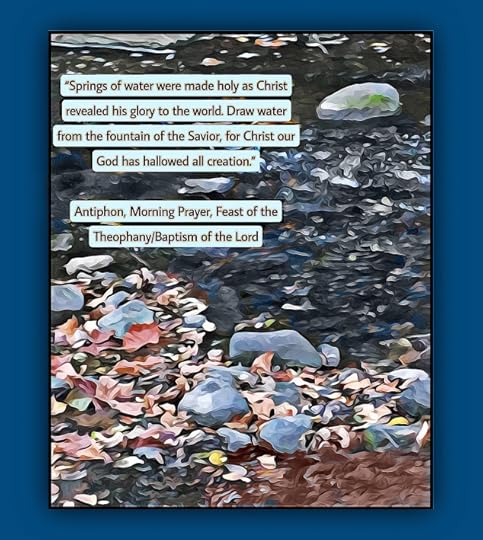
Even though the liturgical calendar returns to “Ordinary Time” after this feast, we will keep our Christmas tree, lights, and Nativity Scene up and glowing throughout the month of January and up to the feast of the “Presentation of Jesus in the Temple” on February 2, which is 40 days after Christmas.
This longer “Epiphanytide” is linked to old traditions for celebrating the season, and many places in Europe and Latin America the decorations and Nativity Scenes remain up all through January until the last of the celebrations from the Infancy Narratives recorded in Luke 2:22-40.
As we need little encouragement to prolong the party (not to mention the fact that we have an indestructibly green fake tree that didn’t go up until Christmas Eve, and that nobody minds putting off the tedious tasks of taking it all down, packing it up, and returning it to the attic😜) — we have always observed this time-honored “extension” in our home.
January, after all, remains cold and dark. It is good to continue to remember in this special way that Christ our Savior has come into the world, and that He is our Light.
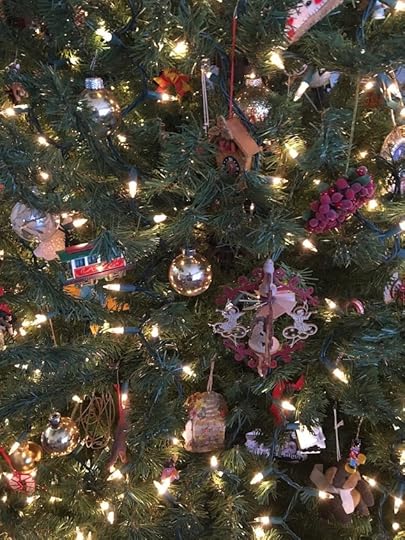
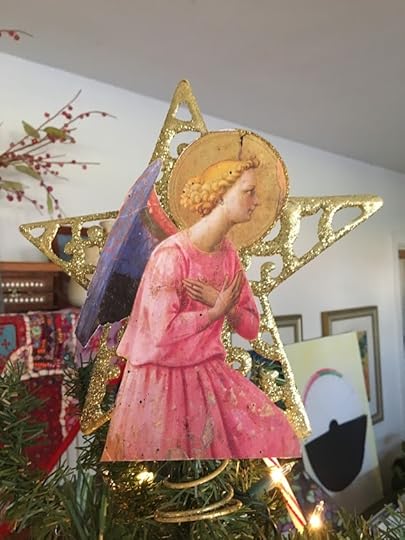
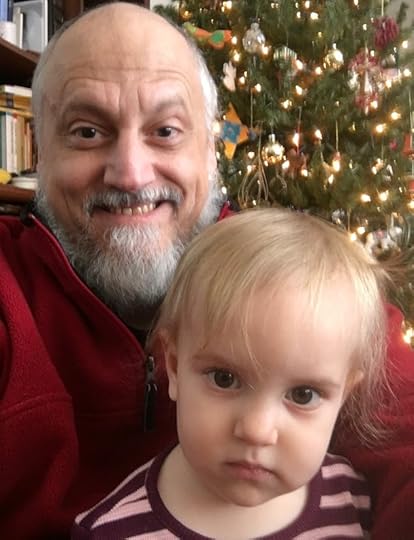
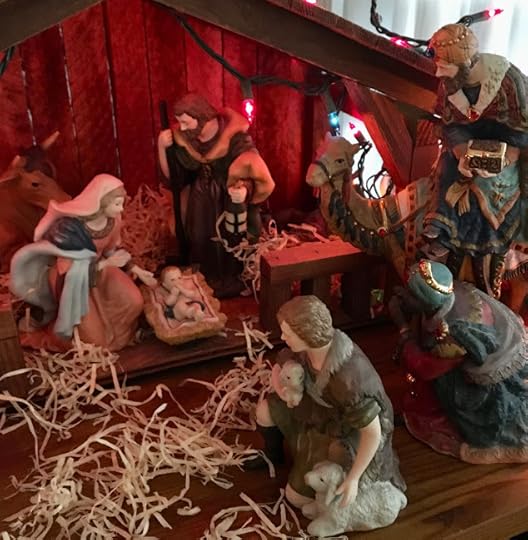
January 8, 2023
Journey of the Magi

Journey of the Magi
by T. S. Eliot (1927)
“A cold coming we had of it,
Just the worst time of the year
For a journey, and such a long journey:
The ways deep and the weather sharp,
The very dead of winter.”
And the camels galled, sore-footed, refractory,
Lying down in the melting snow.
There were times we regretted
The summer palaces on slopes, the terraces,
And the silken girls bringing sherbet.
Then the camel men cursing and grumbling
And running away, and wanting their liquor and women,
And the night-fires going out, and the lack of shelters,
And the cities hostile and the towns unfriendly
And the villages dirty and charging high prices:
A hard time we had of it.
At the end we preferred to travel all night,
Sleeping in snatches,
With the voices singing in our ears, saying
That this was all folly.
Then at dawn we came down to a temperate valley,
Wet, below the snow line, smelling of vegetation;
With a running stream and a water-mill beating the darkness,
And three trees on the low sky,
And an old white horse galloped away in the meadow.
Then we came to a tavern with vine-leaves over the lintel,
Six hands at an open door dicing for pieces of silver,
And feet kicking the empty wine-skins.
But there was no information, and so we continued
And arriving at evening, not a moment too soon
Finding the place; it was (you may say) satisfactory.
All this was a long time ago, I remember,
And I would do it again, but set down
This set down
This: were we led all that way for
Birth or Death? There was a birth, certainly,
We had evidence and no doubt. I had seen birth and death,
But had thought they were different; this Birth was
Hard and bitter agony for us, like Death, our death.
We returned to our places, these Kingdoms,
But no longer at ease here, in the old dispensation,
With an alien people clutching their gods.
I should be glad of another death.





